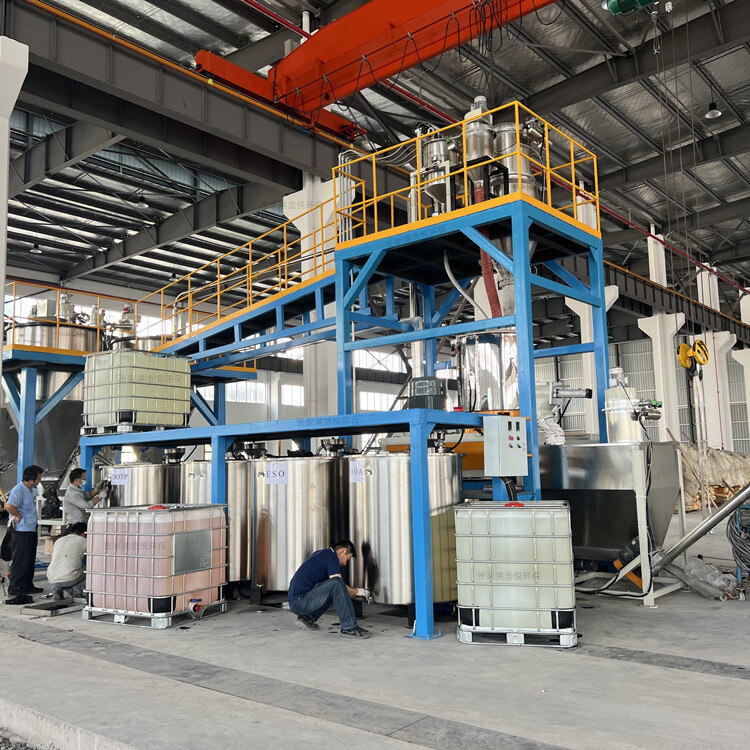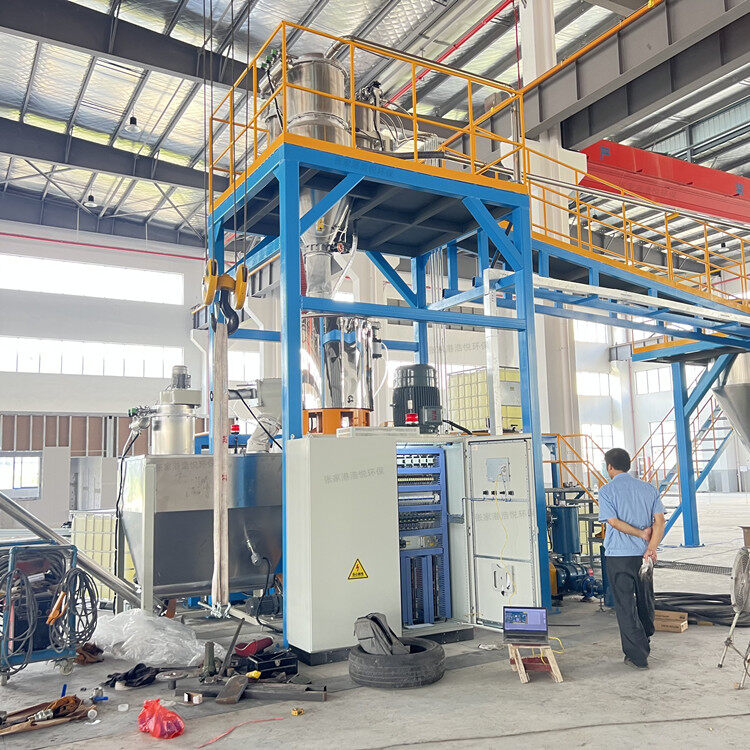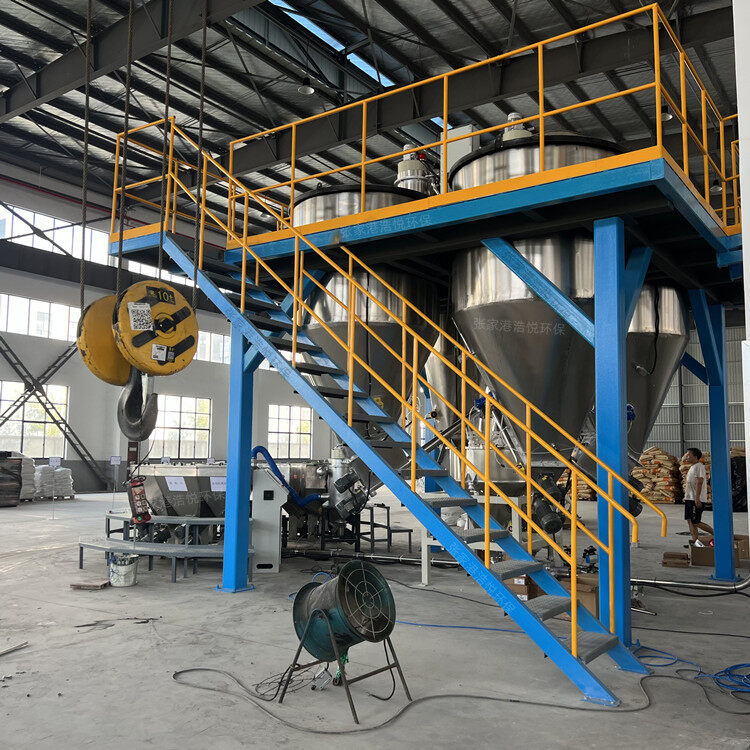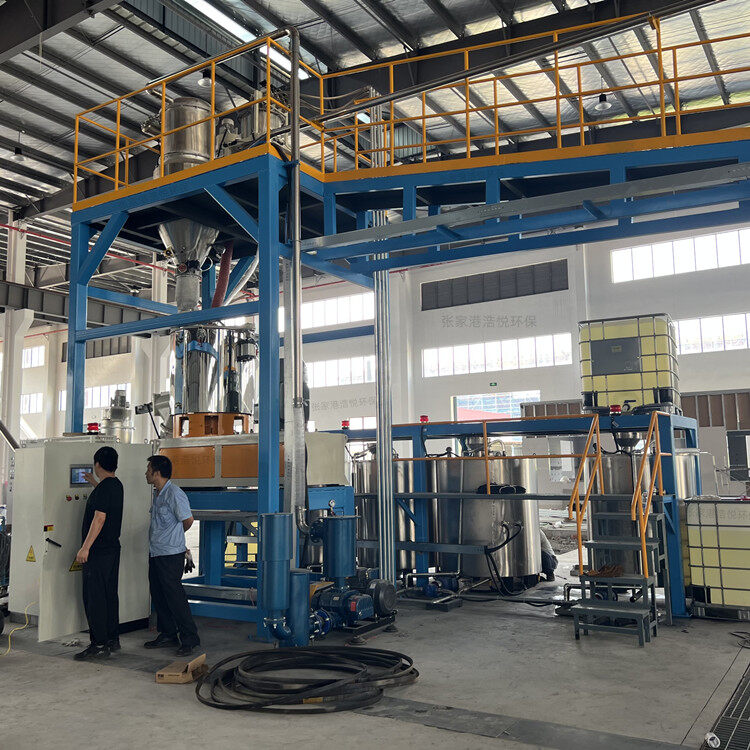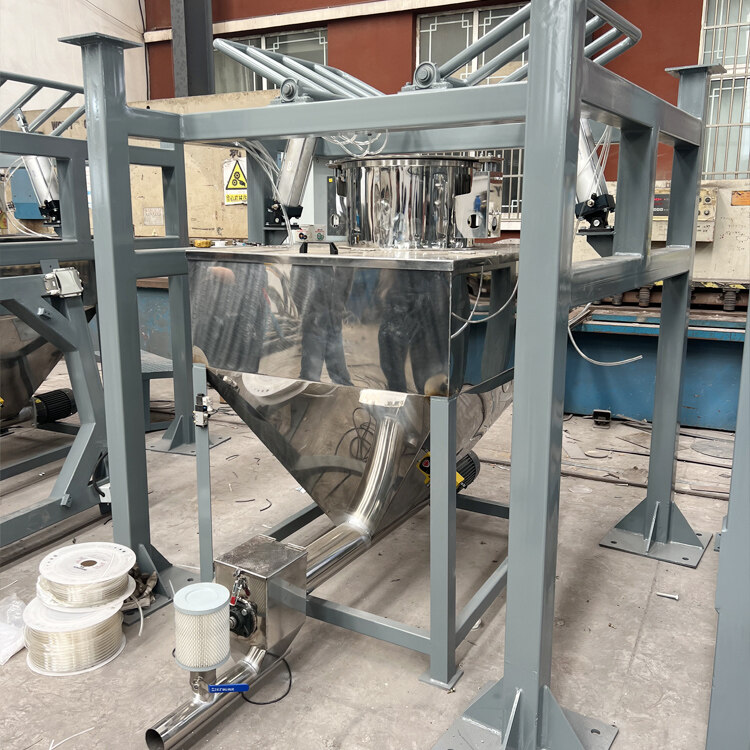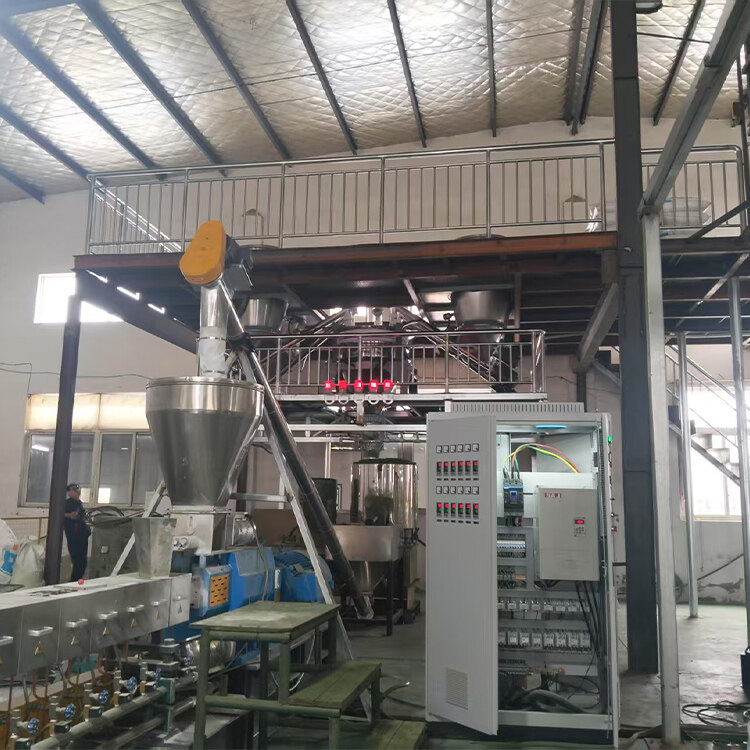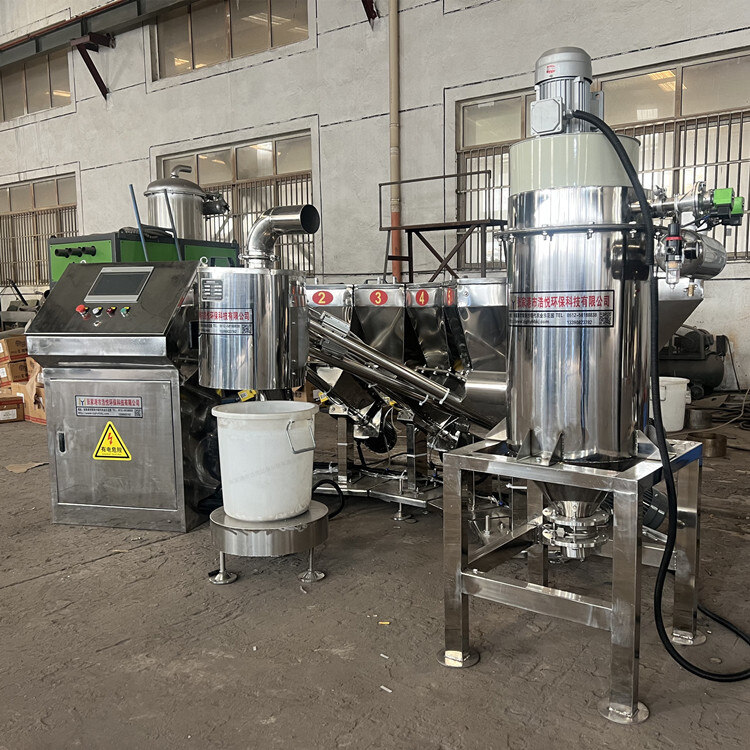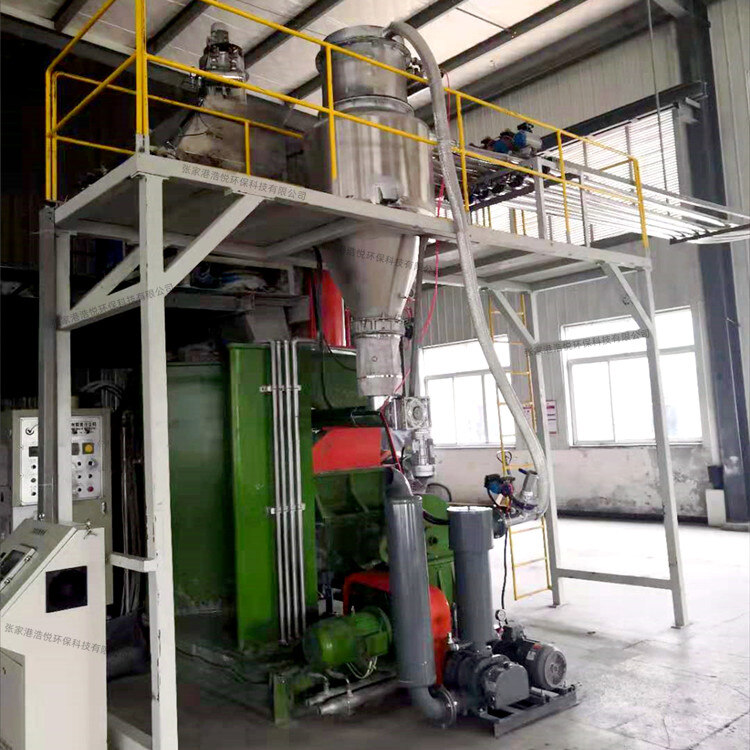- Introduction to automatic batching machine and fully automatic batching machine equipment
- The powder metering system tells you about the introduction of the mixing and drying machine
- 1000kg vacuum feeding machine
- Fully automatic small material batching system
- Research on Innovation of Automatic Weighing Machine Technology
- Design and operation of automatic batching system using PLC, industrial computer and frequency converter
Automatic metering system for granulation production line
- Category:Automatic metering and conveying equipment
- Hits:208次
- Release Date:2025-06-30
- Share:
- Inquiry
- Details
In modern industrial production, from precise proportioning of fine chemical raw materials, to precise filling of food and beverages, to pharmaceutical formulation in the pharmaceutical industry, liquid metering and conveying systems play a crucial role. This system ensures product quality consistency, improves production efficiency, and reduces material waste by high-precision measurement and stable transportation of liquid materials. The following will provide a comprehensive and in-depth introduction to the liquid metering and conveying system from the aspects of system composition, working principle, core advantages, application scenarios, and development trends.
1、 Core components of the system
The liquid metering and conveying system mainly consists of five modules: liquid storage unit, metering unit, conveying unit, control system, and auxiliary unit. The various parts work closely together to form a complete automated liquid processing system.
(1) Liquid storage unit
This unit is responsible for storing liquid materials to be processed and designing different storage schemes based on the physical and chemical properties of the liquid, such as corrosiveness, flammability, volatility, etc. Generally, storage tanks made of stainless steel, polyethylene, or fiberglass are equipped with liquid level sensors to monitor the liquid inventory in real time. When the liquid level falls below the set value, an automatic alarm is triggered to prompt the operator to replenish the materials. For liquids that require constant temperature storage, the storage tank is also equipped with a jacket that can be filled with heating or cooling media to maintain stable liquid temperature; For flammable and explosive liquids, storage tanks are equipped with anti-static devices and fire and explosion prevention facilities to ensure storage safety.
(2) Measurement unit
The measuring unit is the key to achieving accurate measurement of liquids. According to different measurement principles and accuracy requirements, there are mainly the following measurement methods:
Volumetric metering: common equipment such as gear pumps, screw pumps, plunger pumps, etc. Taking gear pumps as an example, a fixed volume chamber is formed through the meshing and separation of gears, which precisely controls the volume of liquid delivery. This method is suitable for measuring medium to high viscosity liquids, with high measurement accuracy of up to ± 0.5%.
Mass measurement: Using a Coriolis mass flowmeter, the Coriolis force generated by fluid flow in a vibrating tube is used to directly measure liquid mass, without being affected by factors such as liquid density, temperature, pressure, etc. The measurement accuracy can reach ± 0.1%, especially suitable for high-precision proportioning production scenarios.
Electromagnetic metering: The electromagnetic flowmeter is based on Faraday's law of electromagnetic induction and measures flow by detecting the induced electromotive force generated by the flow of conductive liquid in a magnetic field. It is suitable for measuring clean conductive liquids and has the characteristics of fast response speed and wide range of measurement.
(3) Conveyor unit
The conveying unit is responsible for delivering the measured liquid material to the target location, and selecting the appropriate conveying method based on the liquid characteristics and production requirements:
Pump transportation: Centrifugal pumps are suitable for transporting high flow, low head clean water or low viscosity liquids; Diaphragm pumps can be used to transport corrosive, high viscosity, or particulate liquids, achieving leak free delivery through the reciprocating motion of the diaphragm; Peristaltic pumps are commonly used in laboratories or for small flow, high-precision liquid transportation. They push the liquid forward by squeezing hoses and have the advantages of no pollution and precise flow control.
Pipeline transportation: corrosion-resistant and high-pressure resistant pipelines are used, and materials such as stainless steel pipes, polytetrafluoroethylene pipes, or lined rubber pipes are selected according to the characteristics of the liquid. To reduce the resistance and residue of liquid in the pipeline, the pipeline design follows the principle of being short and straight, and necessary valves (such as globe valves, check valves, and regulating valves) are installed to control the flow direction and flow rate of the liquid.
(4) Control system
The control system is based on PLC (Programmable Logic Controller) or industrial computer, with dedicated control software and human-machine interface (HMI). The operator inputs the measurement parameters (such as flow rate, total amount, ratio, etc.) and conveying instructions of the liquid through the HMI, and the system controls the operation of the measurement unit and conveying unit according to the preset program. During operation, real-time data from measuring sensors and conveying equipment is collected and compared with the set values. Once a deviation occurs, parameters such as pump speed and valve opening are automatically adjusted to achieve closed-loop control and ensure the accuracy of measurement and conveying. In addition, the control system also has fault diagnosis, alarm prompts, and data recording functions, which facilitate production management and equipment maintenance.
(5) Auxiliary unit
The auxiliary unit includes a cleaning system, filtering device, and safety protection equipment. The cleaning system is used to regularly clean pipelines, measuring equipment, and storage tanks to prevent liquid residue and cross contamination. Common cleaning methods include CIP (in-situ cleaning) and SIP (online sterilization); The filtering device can remove impurities and particles from liquids, protect measuring and conveying equipment, and extend their service life; Safety protection equipment such as emergency stop buttons, pressure safety valves, leak detection devices, etc., comprehensively ensure the safety of equipment and personnel.
2、 Working principle and process
After the operator sets the measurement parameters and delivery tasks of the liquid in the control system, the system first starts the discharge valve of the liquid storage unit, and the liquid flows into the measurement unit under the action of gravity or pump. The measuring unit accurately measures liquids based on preset measurement methods and values. For example, when using a volumetric metering pump, the pump operates at a set speed and delivers a fixed volume of liquid; Use a Coriolis mass flowmeter to monitor liquid quality in real-time and stop feeding when the set value is reached. After the measurement is completed, the conveying unit starts and transports the liquid through pipelines to the target location, such as reaction vessels, mixing tanks, filling equipment, etc. Throughout the entire process, the control system continuously monitors the measurement and transportation data, adjusts the equipment operating status in real time, and ensures the accuracy and stability of liquid measurement and transportation. After completing the conveying task, the system can activate the cleaning system as needed to clean the equipment and prepare for the next operation.
3、 Core technological advantages
(1) High precision measurement
The liquid metering and conveying system adopts advanced metering technology and sensors, which can overcome the influence of liquid characteristics (such as viscosity changes, temperature fluctuations) and environmental factors, and achieve high-precision metering. In some high-end applications, the quality measurement accuracy can reach ± 0.1%, and the volume measurement accuracy can reach ± 0.5%, meeting the strict requirements of different industries for material ratio.
(2) Automation and Efficiency
Realize fully automated operations from liquid storage, metering to transportation, without the need for manual intervention, significantly reducing operation time and improving production efficiency. The system can be linked with upstream and downstream equipment (such as mixers and filling machines) to achieve continuous production, effectively reducing labor costs and intensity.
(3) Flexible formula management
Support the storage and quick switching of multiple liquid formulas, allowing operators to call different formulas at any time according to production needs, meeting the production mode of multiple varieties and small batches. Ensure the security of core formula data through permission management functions.
(4) Data management and analysis
Automatically record the measurement data, delivery time, equipment operating parameters, etc. of each batch of liquid, and generate detailed production reports. By analyzing data, enterprises can optimize production process parameters, predict equipment maintenance cycles, and provide strong data support for production decisions.
4、 Application scenarios
(1) Food and beverage industry
In beverage production, it is used to accurately measure water, juice concentrate, sweetener, essence and other raw materials to ensure consistency of taste and quality of beverages; In dairy production, achieve precise ratio of milk, cream, and additives; In the process of filling edible oil, controlling the accuracy of filling volume can improve production efficiency and product qualification rate.
(2) Pharmaceutical industry
In drug production, precise measurement of active ingredients, solvents, and excipients is required to ensure the accuracy and consistency of drug formulations, in compliance with GMP (Good Manufacturing Practice) requirements; In the production of injections, high-precision measurement and delivery of drug solutions are carried out to ensure drug quality and safety.
(3) Chemical industry
In fine chemical production, precise measurement and transportation of various chemical reagents, solvents, and catalysts are achieved to ensure the accuracy and stability of chemical reactions; In the production of coatings and inks, controlling the ratio of resin, pigment, solvent and other raw materials to improve product performance; In the field of petrochemicals, measuring and transporting crude oil, additives, etc. to optimize production processes.
(4) Other industries
In the daily chemical industry, it is used for measuring and blending cosmetic raw materials; In the new energy industry, precise measurement and transportation of liquids such as lithium battery electrolytes; In the water treatment industry, controlling the dosage of coagulants, disinfectants, and other agents to ensure the effectiveness of water quality treatment.
5、 Development Trends
In the future, liquid metering and transportation systems will develop towards intelligence, integration, and greenization. In terms of intelligence, artificial intelligence and machine learning algorithms are introduced to enable the system to have self-learning and adaptive capabilities, and to automatically optimize measurement and conveying parameters based on production data; In terms of integration, it deeply integrates with the enterprise's ERP (Enterprise Resource Planning) and MES (Manufacturing Execution System) to achieve collaborative management of production planning, material inventory, and measurement and transportation operations; Greening is reflected in reducing equipment energy consumption, minimizing liquid leakage, and using environmentally friendly materials. By optimizing system design and operating modes, it promotes sustainable development in the industry. Meanwhile, with the development of microfluidic technology, liquid metering and delivery systems will extend towards miniaturization and precision, meeting the needs of emerging fields such as biomedicine and nanomaterials.


